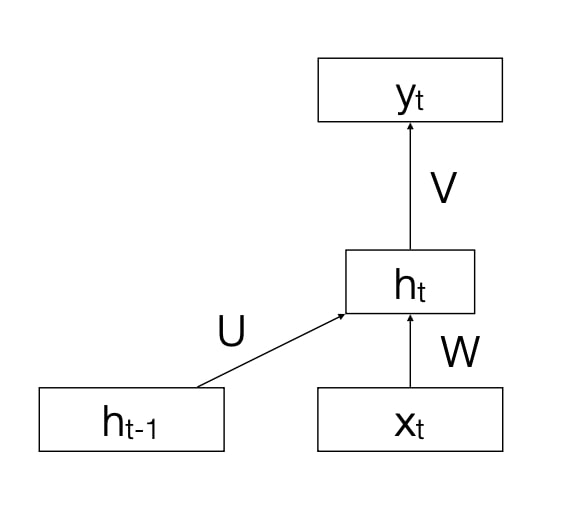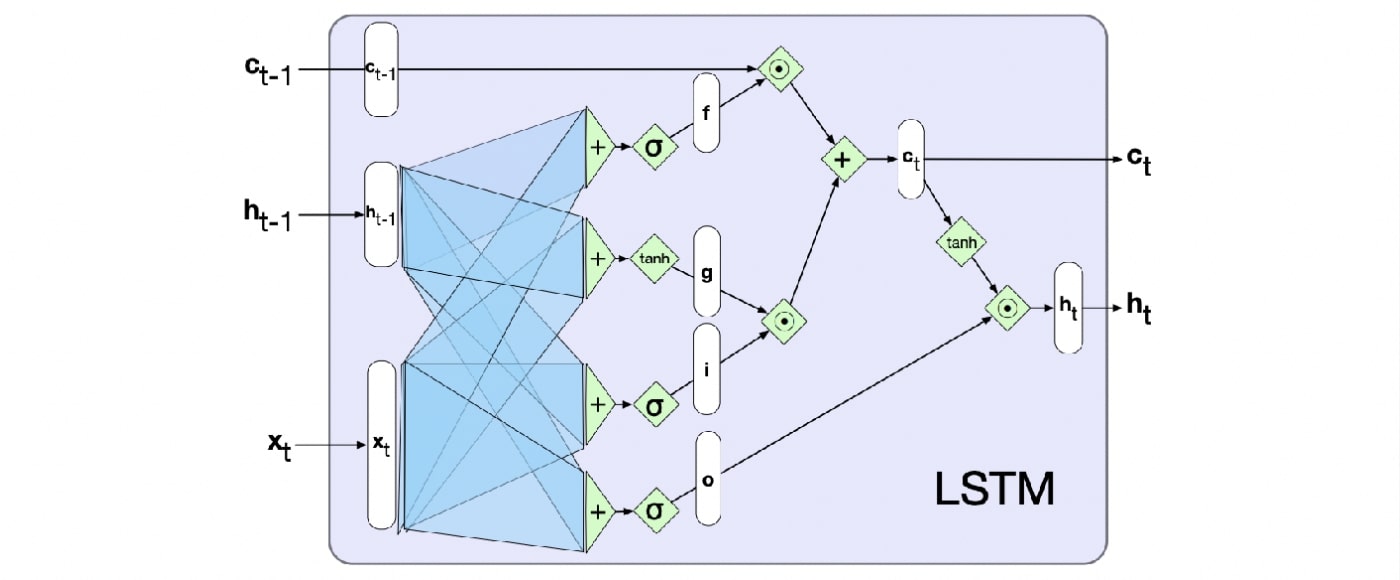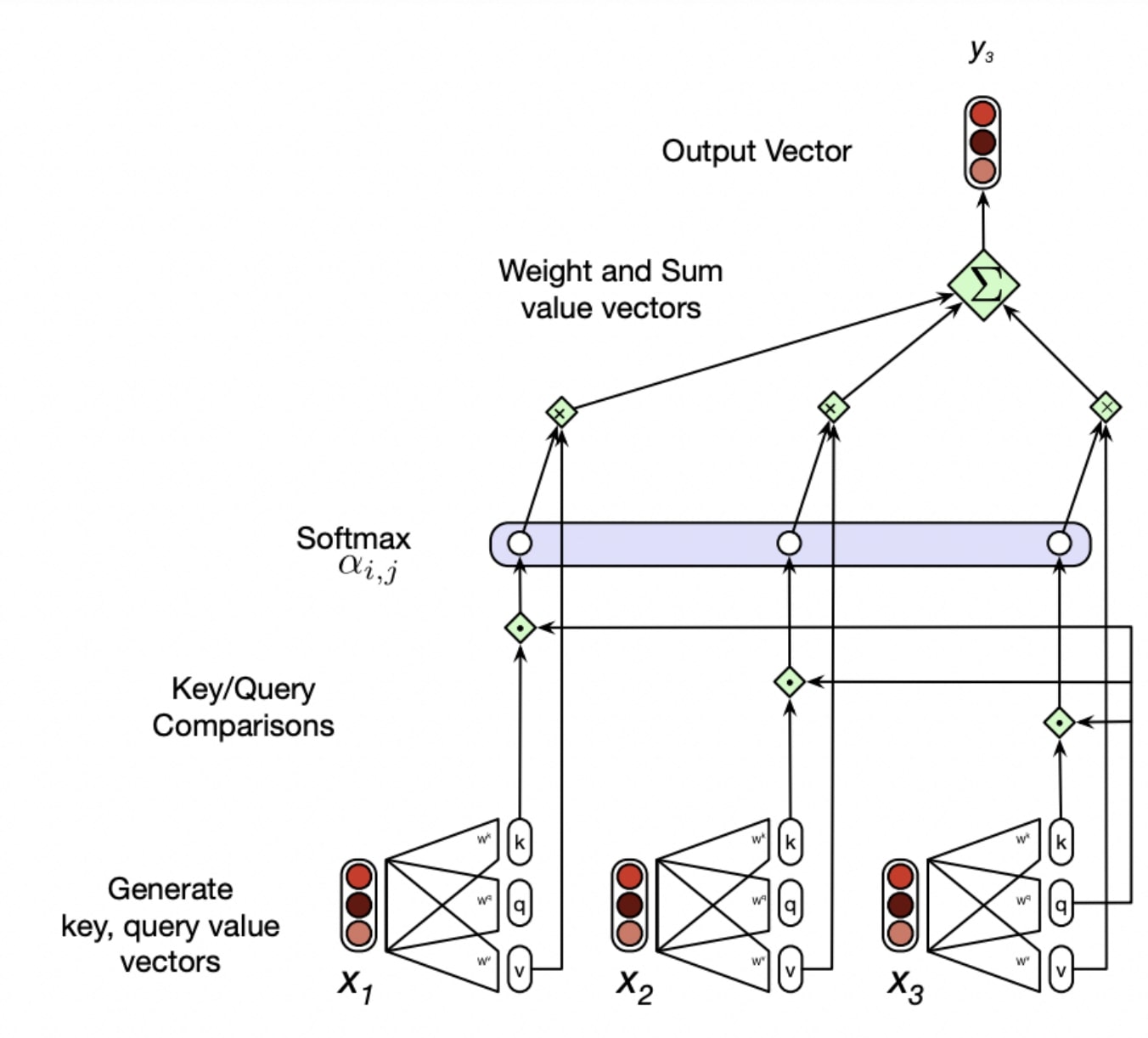Authored by Tony Feng
Created on Oct 18th, 2022
Last Modified on Oct 20th, 2022
Intro
This sereis of posts contains a summary of materials and readings from the course CSCI 1460 Computational Linguistics that I’ve taken @ Brown University. The class aims to explore techniques regarding recent advances in NLP with deep learning. I posted these “Notes” (what I’ve learnt) for study and review only.
Multi-layer Perceptron
- MLP doesn’t readily support long, sequential inputs
- MLP doesn’t consider encoding word order, essentially a BOW model.
- Inputs either become muddy (adding everything together, i.e., “bag-of-vectors”) or too large (concatenating everything)
- “bag-of-vectors” classifiers are common and often work well for basic applications
Recurrent Neural Network (RNN)
Architecture
The basic idea is generation of word $i+1$ depends on word $i$ plus “memory” of words generated up to $i$.



$$h_{t}=g\left(U h_{t-1}+W x_{t}\right)$$ $$y_{t}=f\left(V h_{t}\right)$$
Inference
|
|
Training Considerations
- In practice, using unrolled and padded to a fixed length is better for batching.
- When producing word $i$, predict based on the real $i-1$, not the predicted $i-1$ (which is likely wrong).
Long-Short Term Memory (LSTM)
Motivation
- RNNs struggle with long range dependencies.
- Vanishing gradients makes it hard to update early hidden states for long sequences.
Architecture
Overview
- Introducing a “gating” mechanisms to manage the hidden state/ memory
- Passing through “gates”
- “Forget” gate removes information no longer needed
- “Add” gate adds new information likely to be useful in the future
- “Output” gate
- Adding explicit previous “context” in addition to prior hidden state



Gate
- Learn some mask (i.e., vector) via backpropagation
- Apply the mask(i.e., elementwise multiplication) to some hidden state
Computation
- Compute “current” state, “add” gate, “forget” gate, and “output” gate from previous hidden state and current input.
- g = current state
- f = forget gate
- i = add gate
- o = output gate (controls what to output and retains the relavant info right now.)
- k = intermediate output (context after “forgetting”)
- j = intermediate output (info to be added to the context)
- c = updated context
- h = updated hidden state
- Combine those things using Hadamard product.
- Update context and hidden state for next iteration.
$$g=\tanh \left(U_{g} h_{t-1}+W_{g} x_{t}\right) $$ $$f=\operatorname{sigmoid}\left(U_{f} h_{t-1}+W_{f} x_{t}\right) $$ $$i_{t}=\operatorname{sigmoid}\left(U_{i} h_{t-1}+W_{i} x_{t}\right) $$ $$o_{t}=\operatorname{sigmoid}\left(U_{o} h_{t-1}+W_{o} x_{t}\right) $$ $$k_{t}=f_{t} \odot c_{t-1} $$ $$j_{t}=i_{t} \odot g_{t} $$ $$c_{t}=j_{t}+k_{t} $$ $$h_{t}=o_{t} \odot \tanh \left(c_{t}\right) $$
Transformer
Architecture
Representation of the word depends on (slightly less contextualized) representation of other words.



Self Attention
The idea is to learn a distribution/weighted combination of hidden states that inform this hidden state.
Each word has three roles at each timestep and we learn three weight matrices $(Q,K,V)$ to cast each word into each role. The dot product of key and Query produces a weight and the next layer receives the weighted combination of values.
- Query: The word as the current focus
- Key: The word as a context word
- Value: The word as part of the output



Multi-threaded self-attention is repeating the attention process multiple times. Each KQV set can focus on a slightly different aspect of the representation.
Blocks



Residual Connection
It adds input to output to help with training/vanishing gradients.
Layer Normalize
It has the same idea of Z-score normalization.
Feedforward Layer
It is a simple perceptron-style layer to combine everything togethrt.
Positional Encoding
Transformers aren’t actually aware of the order in which words occur, becasue they are a bag of words essentially.



Positional encodings add an embedding representation of the absolute position to the input word embedding. However,
- Not the same as relative/order information in language
- Less supervision for later positions
- Hard to deal with recursive human language
why is it a big deal?
- Attention
- has minimal inductive bias
- can learn arbitrary graph structure
- Multiheadedness
- Each “head” focuses on a different subspace of the input
- Scalability
- At layer N, no dependency between timesteps, so it can be trained in parallel
- Faster training = bigger models + more data
- Allows for massive pretraining